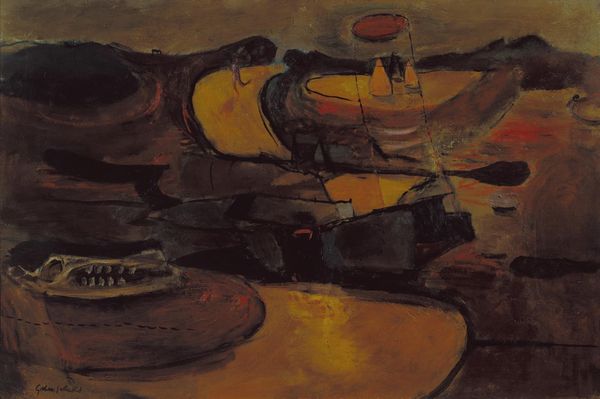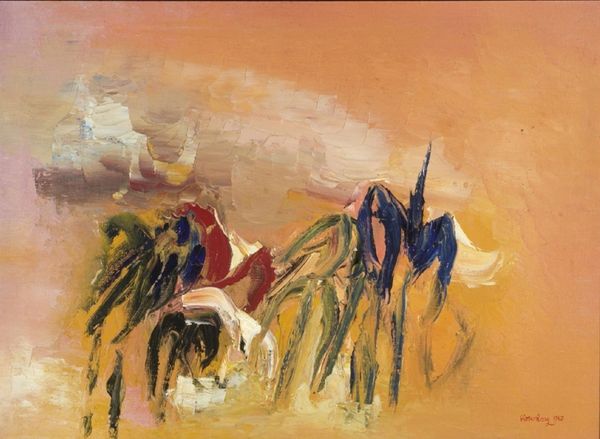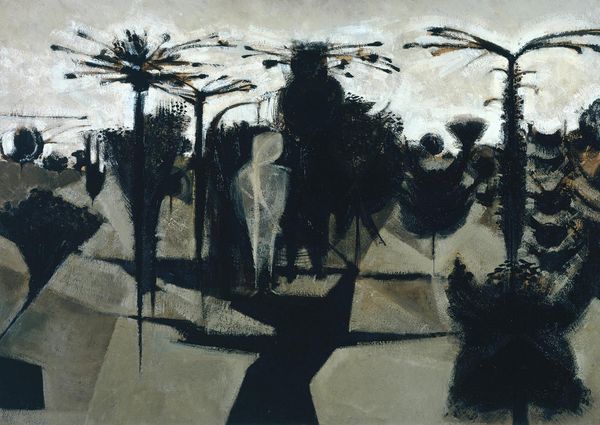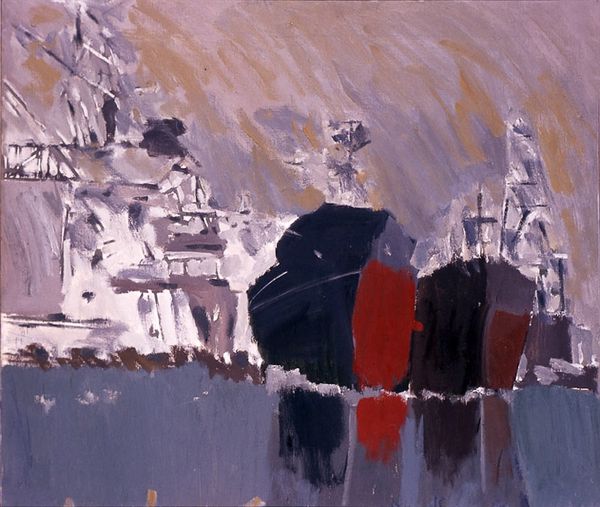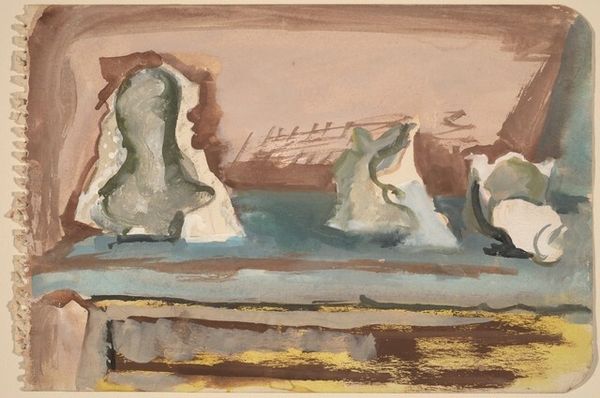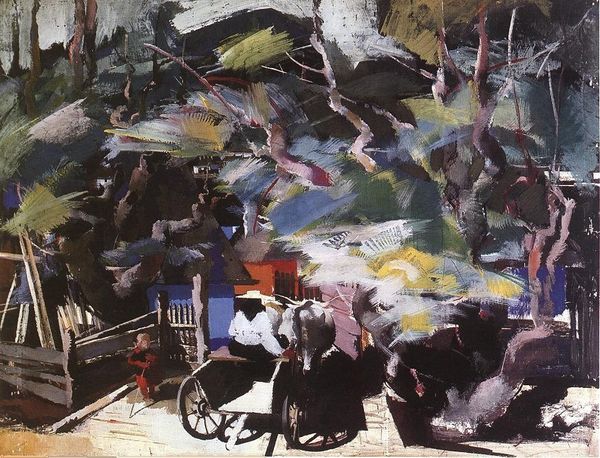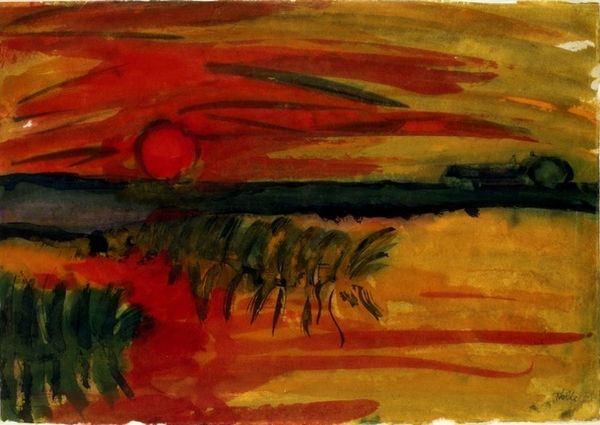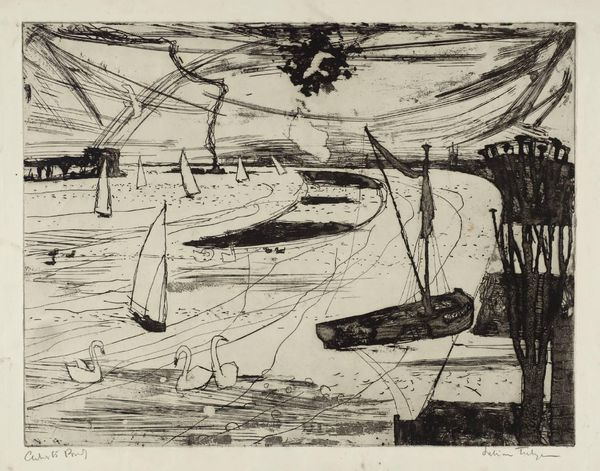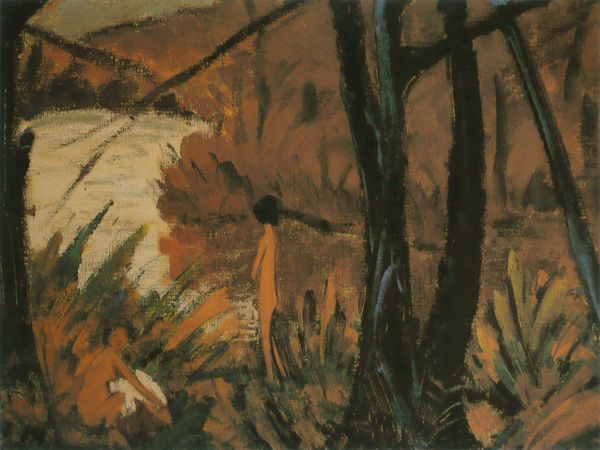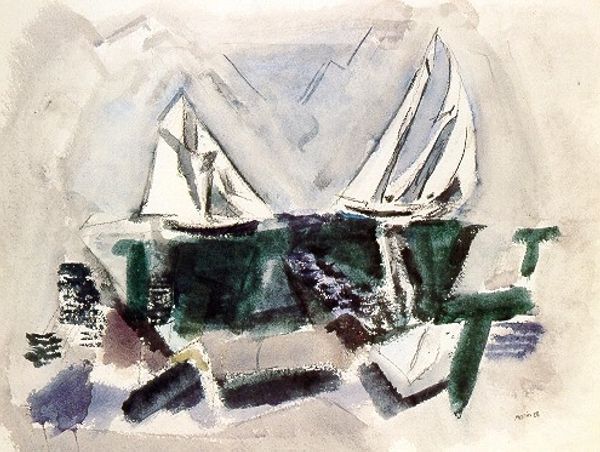
Dimensions: overall: 63.5 x 81.6 cm (25 x 32 1/8 in.) framed: 66.4 x 84.1 x 4.3 cm (26 1/8 x 33 1/8 x 1 11/16 in.)
Copyright: National Gallery of Art: CC0 1.0
Curator: Here we have John Hultberg's "The Island," created in 1957 using oil paint. The abstract shapes hint at a landscape, but it's far from a traditional depiction. Editor: Whoa. My first thought? A shipwrecked dream. Those ghostly shapes rising from the darkness feel like fragmented memories washed ashore. There’s something about the yellow that reads almost apocalyptic, doesn’t it? Curator: Hultberg was deeply involved in the New York art scene and his work engages with post-war anxieties and social transformations through his application of materials. His choice to depict these subjects is rooted in an attempt to expose an internal turmoil reflective of that historical era. We can analyze the context of post-war America and how industrial shifts affected a new type of labor. Editor: Industrial shifts...Yes, I can definitely feel it, but my intuition steers toward a more existential read of these shadowy spaces, those stark geometric masses set against an unyielding yellow. They convey the haunting isolation, like remnants of lives left adrift or longing to rebuild—perhaps even in spite of any context. Curator: Abstraction in this period moved against earlier depictions of human labor; this is an environment in decay that represents a direct response to those established traditions. Consider the role of materials and what kind of message they provide for the current audience. Editor: You're right, and from that angle, these fractured, angular forms aren't just dreamscapes—they're artifacts, bits of an era almost ossified, or maybe something half buried...waiting. I feel the paint, thick in places, thin in others. What I also take away is how much it leaves to the imagination to fill in these blanks. Curator: Hultberg manipulates materiality to give us a moment to confront the post-war landscape that brought a change in how the labor and working classes operated. That interplay brings up an interesting discourse around the function of art within historical structures. Editor: It’s uncanny how something so seemingly desolate can hold so much narrative possibility, even in something that almost wasn’t. Makes you wonder about our own fragmented futures.
Comments
No comments
Be the first to comment and join the conversation on the ultimate creative platform.
